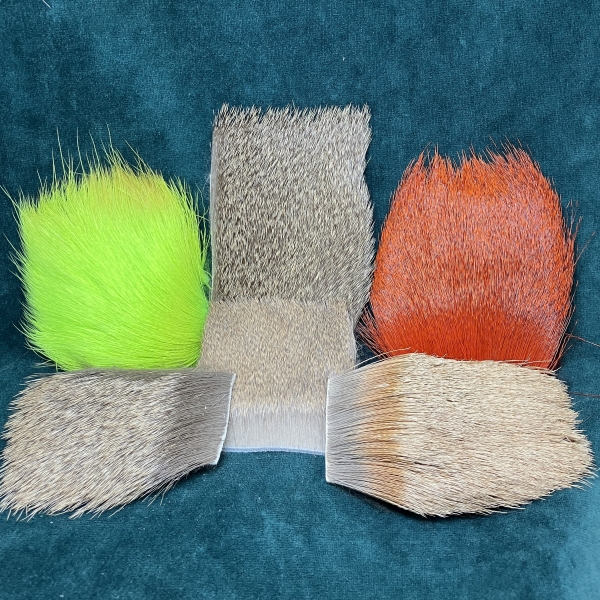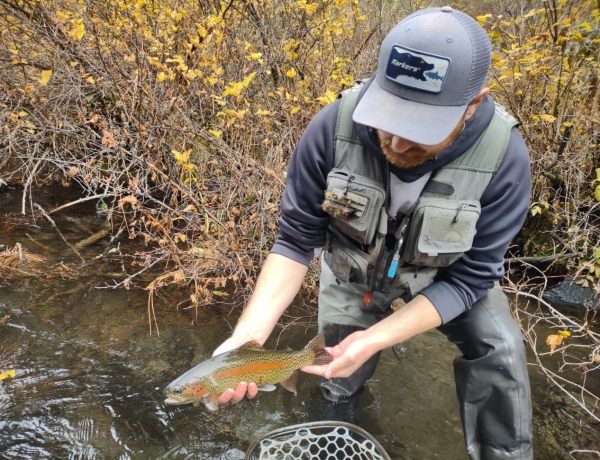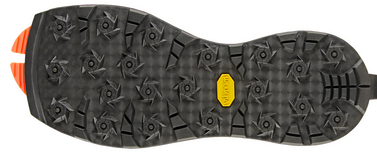Angling
Most of the adult fish in the Metolius system make their living eating kokanee in Lake Billy Chinook. You can target them in the lake year round, but they are mostly available to fly fishermen in the early spring. As the water begins to warm, the kokanee follow their food source of little aquatic animals called zooplankton closer to the surface as the zooplankton feeds on blooming algae and other plant matter. Once this happens, the bull trout are easy to target in about 4-12 feet of water with streamers as they hunt for kokanee schools or stray kokanee wandering off. Most often a 6-8 weight rod is used, since you are casting big flies to big fish. Just because the fish are in shallow water doesn't mean you'll catch them all the time though, as the bulls and prey move a lot and covering water is the most important thing for this fishery. Streamers are certainly the most fun and involved way to catch fish, but things like balanced leeches/streamers or chironomids under an indicator can also work. Watching an indicator is also a lot less stressful on your casting shoulder if you get fatigued. For the streamers, you can't tie a fly that is too big for a bull to eat, and you can't strip too fast either. If they're eating kokanee, the bulls are eating fish anywhere from 2"-14" and the smaller end of that scale are usually the flies that work best in the reservoir.
Starting around mid-summer, the bull trout begin their migration up from the reservoir into the Metolius. Most fish will be in the Metolius system until around the end of November. Fishing for bull trout in the river is not really a match the hatch type of approach so much as it is just about finding the willing fish. The best times to fish are during the initial wave of fish coming up, and during the kokanee spawning run in late fall. This will be when the fish are most aggressive. Large streamers are again the most exciting way to target these fish, but nymphing also works, especially on those long runs near the Wizard Falls fish hatchery that see a lot of pressure. As with the streamers, getting the nymphs as close to the bottom as possible is the most important thing. Throughout the push upstream, these fish will hug the bank and can be found in all sorts of interesting structure. They will hang out above long rapids recovering, and eventually they will settle in close to the mouth of the tributary they plan to spawn in. How long they spend near the trib mouths depends on weather, because they are triggered to spawn by a certain water temperature. There are resident fish that live in the Metolius year-round as well, and they follow the same pattern as their reservoir counterparts, albeit with a smaller maximum size. These fish can still get over 20" though, and so there are always large fish in the Metolius that can be targeted.
History
Bull trout are native to northwestern North America, and their native range extended from the McCloud River in California to the Liard River in Alaska/the Yukon. Bull trout have unfortunately been extirpated from the McCloud River (and most other coastal draining rivers south of Washington) and their southernmost distribution is now in headwater streams of the Upper Klamath Lake basin. Evolving amongst the volatile volcanic landscape of the Pacific Rim, these fish became adapted to making long migrations to spawn and follow forage fish such as outmigrating salmon and steelhead smolts. They are also capable of anadromy, such as in some Puget Sound rivers, but most targetable populations of bulls are in reservoirs or lakes and the streams that feed them. By the time bull trout hit 14", their diet is almost exclusively other fish. Their large, wide heads help them eat fish up to and even a little bigger than half their size. There are some populations of bulls that stay in headwaters and don't get very big, but most populations that remain in North America are ones that are able to take advantage of a prey base made up of smaller fish. Historically, that prey base would have been anything from whitefish, sculpin, and suckers, to redband and outmigrating smolts in the Deschutes watershed.
In the central Oregon region, as in much of their native range, many factors have led to the decline of bull trout abundance. Dams restricted their migrations, leading to much lower gene flow between populations and in some cases blocking them from and inundating their spawning grounds. Gene flow between populations is especially important to bull trout for a few reasons. Bull trout take a long time to sexually mature relative to other trout. Most information says that bulls will mature around 5-7 years of age, whereas by comparison redband mature typically 2-3 years of age. Bull trout are either at the top or very close to the top of the food chain in their habitats, which in turn leads to fewer mature adults being supported by the ecosystem than animals that are lower on the food chain. Since bull trout are less abundant, being able to travel greater distances within a watershed to spawn with populations from other sections of river or different tributaries is more important for bulls than other fish species. Fisheries managers made some poor decisions up until the 80s, using bull trout as a scapegoat for dwindling salmon and steelhead populations since bull trout are known smolt predators. If you went in to an ODFW office in that time period, it's possible you might have seen a poster that said "Kill a bull trout, save a salmon". Obviously, now people are aware that bull trout are part of a healthy intact ecosystem but a lot of damage was done from encouraging recreational harvest over a century or so. Fracturing of their habitat also played a large role in their reduced abundance. Dams, weirs, irrigation, and other anthropogenic (human-made) barriers to migration affected populations negatively since the beginning of European settlement in central Oregon. Bull trout used to be in the Deschutes watershed from the mouth to the upper Deschutes and lakes such as Crescent and Odell. The last official bull trout in the Deschutes watershed above Big Falls, which is a natural passage barrier to the lower Deschutes/Columbia, was observed in Crescent Lake in 1959. There are still bull trout in Davis Lake and Odell Lake/Creek, but they are naturally disconnected from the Deschutes and are stifled by competition from invasive lake trout in Odell Lake. A few bull trout remain in Suttle Lake, and that is where the lake run life history that now exists in Lake Billy Chinook would have occurred naturally within the Metolius system. Davis and Crescent would've had naturally occuring adfluvial bull trout as well.


